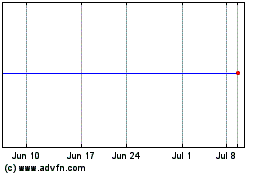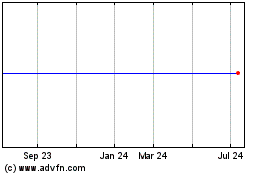By Austen Hufford and Rebecca Ballhaus
The unorthodox approach Donald Trump has taken to campaigning
for president took a toll on broadcasters Tuesday, as signs emerged
that advertising spending in the race for the White House would be
even worse than expected.
Citing the "unusual nature" of this year's election, Sinclair
Broadcast Group Inc. withdrew its political-spending forecast for
the year, sending stocks across the broadcast industry lower.
Sinclair said it has yet to see significant advertising spending on
the race; as recently as August, the company was forecasting a
record year for campaign spending.
"Mr. Trump doesn't appear to be spending as much as people
thought," CBS Corp. Chief Executive Leslie Moonves said at a
Goldman Sachs media conference Tuesday.
In addition, Gray Television Inc. -- which owns stations in 51
markets -- withdrew its guidance for political advertising revenue
for the rest of the year. The company said Mr. Trump's future
campaign spending "is currently impossible to predict," and it
noted the "very unusual nature of this year's late presidential
campaign season."
Mr. Moonves, however, is still optimistic about election
advertising for CBS stations, thanks in large part to a Senate race
and several ballot initiatives in California.
Over all, political ad-spending levels for this presidential
election have shrunk from 2012, as Mr. Trump has aired a
historically low number of TV ads. There were 89,000 ads aired
nationally in the presidential race between Aug. 19 and Sept. 15,
down 42% from the same time frame in 2012, according to a Wesleyan
Media Project report released Tuesday.
In 2012, Republican nominee Mitt Romney spent nearly $50 million
on advertising through July. Mr. Trump spent $20 million in the
same period this cycle, according to the latest figures disclosed
to the Federal Election Commission, and it was spent entirely on
primaries. After becoming his party's effective nominee in May and
officially accepting the nomination in July, Mr. Trump's campaign
didn't begin airing TV ads again until mid-August.
Since mid-August, the Clinton campaign and its supporters have
aired about 62,000 TV ad spots on national television, compared
with about 27,000 aired by the Trump campaign and its supporters,
according to the Wesleyan report.
Industry watchers are divided over whether the lower spending is
a short-term anomaly caused by the abnormal nature of Mr. Trump's
campaign or a sign of a broader rollback of the importance of
television advertising.
Throughout the primary, Mr. Trump relied largely on free media
through interviews with cable networks, which often carried his
rallies live on air.
"It seems to be more of a Trump story than a general story,"
Travis Ridout, a Washington State professor who wrote a book about
campaign advertising, said. He added that in "this presidential
campaign, everyone knows too much about Hillary Clinton and Donald
Trump, and thus the ability for advertising to have any impact is
really quite small."
Mrs. Clinton's ad-spending levels this election cycle are
roughly consistent with what President Barack Obama spent in 2012.
Through July of that year, he spent $111 million on advertising,
compared with $108 million spent by Mrs. Clinton in the comparable
period this year.
"While we previously anticipated a decline in presidential ad
spending in the third quarter based on the late fundraising by the
Trump campaign, we have yet to see significant spending, even at
the levels we initially anticipated," Sinclair's Chief Financial
Officer Chris Ripley said. For the third quarter, Sinclair expects
to take in $46 million from political spending, down from its
previous estimate of $58 million to $68 million.
Sinclair is exposed to a number of battleground states,
including having 20 or more channels each in Ohio, Florida,
Pennsylvania and Michigan and markets in North Carolina and
Virginia. In 2012, total political spending accounted for 11% of
its annual broadcast revenue.
Jan Dawson, Chief Analyst of Jackdaw Research, estimates that
presidential campaigns account for about 30% of total political
spending for local TV station owners; local and state campaigns
make up the bulk.
Even though the revenue impact is relatively small, campaign ads
are higher-margin and contribute more to a company's bottom line,
said Daniel Kurnos, senior equity analyst at the Benchmark
Company.
With less than 50 days until the election, it is becoming
increasingly unclear if extra advertising spending in the final
weeks by the campaigns and their supporters will be able to make up
for the muted spending so far. Sinclair said it was "hopeful"
presidential advertising spending will increase if polls
tighten.
Mr. Trump's super PAC firepower on the airwaves looks likely to
improve in the coming weeks, as two billionaires -- casino owner
Sheldon Adelson and TD Ameritrade founder Joe Ricketts -- have
pledged a combined $6 million to support the nominee. Their efforts
will at least in part be aimed at erasing Mrs. Clinton's major
advantage in TV advertising. Since returning to the airwaves in
mid-August, the Trump campaign's ad spending has escalated each
week.
"Mr. Trump's message, which he primarily takes directly to the
voters on the campaign trail, is authentic, and that's why the
money he has spent on television ads has been so effective," said
Hope Hicks, a Trump spokeswoman.
On Tuesday, shares of Sinclair fell 9.4%. E.W. Scripps Co.
shares dropped 8.7%, Tegna Inc. declined 3.8%, and Tribune Media
Co. fell 4.5%. CBS shares declined 2.2%.
Joe Flint contributed to this article
Write to Austen Hufford at austen.hufford@wsj.com and Rebecca
Ballhaus at Rebecca.Ballhaus@wsj.com
(END) Dow Jones Newswires
September 21, 2016 02:48 ET (06:48 GMT)
Copyright (c) 2016 Dow Jones & Company, Inc.
CBS (NYSE:CBS)
Historical Stock Chart
From Mar 2024 to Apr 2024

CBS (NYSE:CBS)
Historical Stock Chart
From Apr 2023 to Apr 2024
